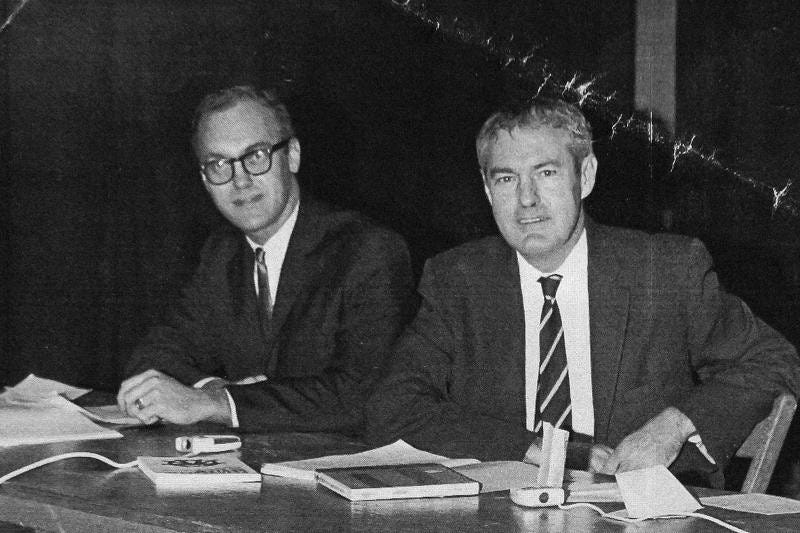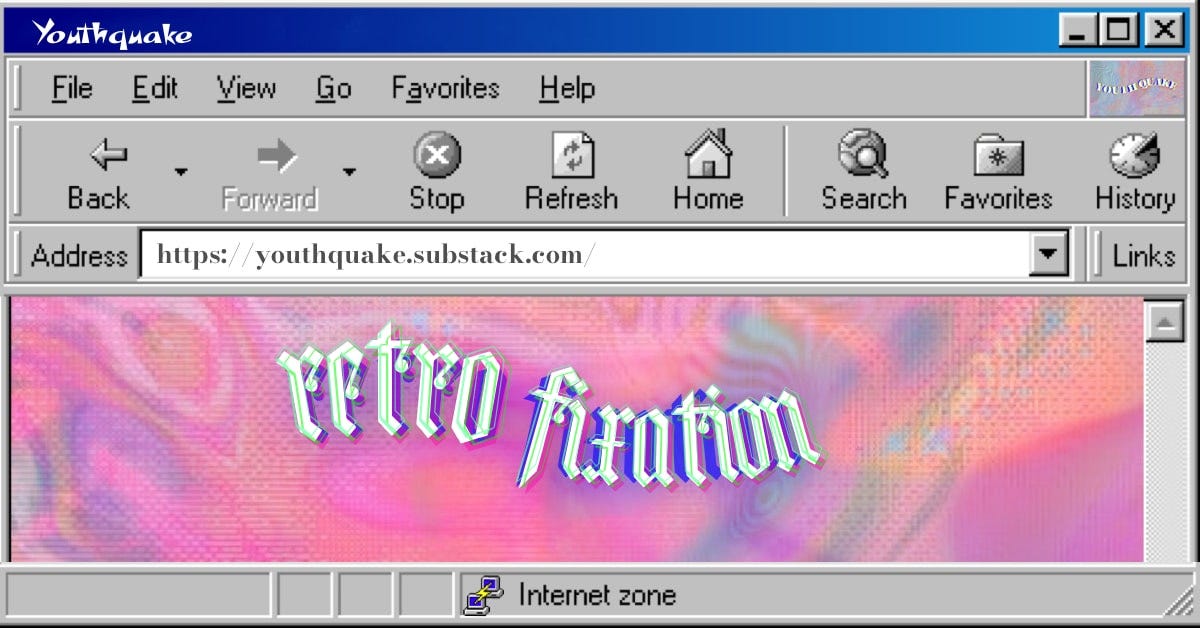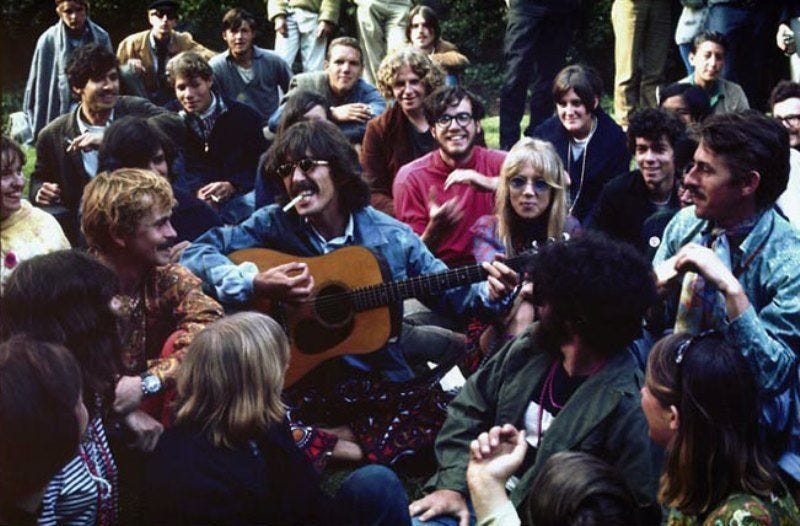Retro Fixation is the dedicated series of our enchantment with the past, which will always undeniably resurge since history has a habit of repeating itself. So step back in time on this journey below into a parallel time interval.
As cubic as Eisenhower’s era was, there was a hidden subculture lurking thanks to Beatniks like Allen Ginsberg and Jack Kerouac; also legendary musicians like John Coltrane and Miles Davis. The great musical influencer of choice were drugs of escapism and inspiration to rebel against expectations through sound. Inspiring genres like jazz and folk music spoke out to youth culture looking to disentangle themselves from their cookie-cutter parents.
By the mid-sixties, then POTUS Johnson intensified America’s involvement in Vietnam as movements were collectively on the rise with social consciousness as students showing interest in the liberation of sexual and civil rights.
Adding pressure to an already high boil is impending doom of the draft. Yet tragedies like the assassination of Malcolm X in the winter; by spring, there were the Berkley protests in conjuncture with the Free Speech Movement and Bloody Sunday. In the summer, the Watts uprising occurred in a neighborhood of Los Angeles and the POTUS Johnson signed a law penalizing the burning of draft cards with up to 5 years in prison and a $1,000 fine; the insidious loom of the draft paved the way into hedonism to fight a war they didn’t agree. Thus, a political stance is formed, and an exploding interest in going beyond escaping into full-on tripping.
Except tripping wasn’t a new concept, LSD was initially created by the Swiss father of psychedelic medicine Albert Hofmann in 1938. Still, it wasn’t until April of 1943 that Hofmann revisited lysergic acid diethylamide and went on a bike ride, becoming the first human to ever trip on acid. Medical experimentation was on the rise by the mid-fifties.
Including the CIA’s human experiments, codename Project MKUltra was the CIA’s chief chemist Sidney Gottlieb's project to achieve mind control. Call it fate, call it irony, but the government attempting to gain mind control powers only to accidentally introduce a revolutionary drug that electrified an entire subversive generation is subjectively a poetic justice. The CIA experimented on test subjects and unwilling or unsuspected targets, using it on mental health patients, incarcerated individuals, sex workers, and persons with a history of substance use. Despite the vast quantities of medical research on psychotherapy of beneficial services and adrenalizing creativity in this time.
One of those test subjects was One Flew Over the Cuckoo’s Nest author Ken Kesey.
Kesey was introduced to LSD by the MK-Ultra and Sidney Gottlieb. Also, American poet and Kerouac lover Allen Ginsberg in 1959. Also, American poet and lyricist for the Grateful Dead Robert Hunter.

By the 1960s, Harvard psychology professors were leading figures for counterculture advocacy with psilocybin and LSD. Timothy Leary first tried magic mushrooms on a trip to Mexico in 1960. Upon returning to Harvard, he placed an order with Sandoz, Inc., a Swiss drug company with branch offices in Hanover, New Jersey, that manufactured a synthetic version of LSD and psilocybin. Disregarding formalities, the professor created the Harvard Psilocybin Project with his colleague Ram Dass (formerly Richard Alpert). Leary and Dass experimented with psychedelics with colleagues and students for self-discovery, later authoring The Psychedelic Experience. The professors caught the media's attention and other converts, like beatnik icon and Howl author Ginsberg; the intrigue of the drug spread like wildfire.
The controversy was too much for Harvard, firing Leary, who moved to the Hitchcock Estate in upstate New York. Leary was free to fiercely advocate for psychedelics, like Kesey and his Merry Pranksters (inspired by Kerouac’s On the Road).
LSD became available to the masses thanks to people like Leary, Kesey, and Owsley Stanley— all the kids, were tuning in, turning out, and dropping out. The hippie movement initially sparked up in San Francisco’s Haight-Ashbury and scintillated many to move west to California. The sunny-drenched optimism of peace, love, and communal living quickly soured like a bad trip after the horrific turn of events that ‘marked the end of the sixties’— Altamont and Helter Skelter.
Then came the federal ban on psychedelics, in 1970 but the love further soured by previous generations branding the hippie movement and counterculture as social disappointments. Only because they dared to question things and the assumed colonized world order. A federal prohibition ban further raised intrigue on psychedelics just as the counterculture aesthetic showed up on runways and Madison Avenue.
Commodifying the counterculture look, the mainstream was swept up in a psychedelic storm and it becoming a trend. It was cool to care; anti-war activism and general cultural movements ignited among youth culture Musicians were using their talent to empower youth culture to see that the country was in chaos and need. Anti-war groups such as the Youth International Party, Weather Underground, and The Black Panther Party all continuously spoke out against the war, among many other things, yet were condemned and blamed, along with youth culture. Young men were now getting drafted into the massacre of America’s relentless military brutality towards Vietnam.
Shocking the supposed purity and innocence of the fifties and abandoning tradition for sex, drugs, and rock n roll. Growing political agitations, racial divides, and cultural tension lead to increased drug use, including a skyrocket use of marijuana with a different kind of reefer madness than intended.
The inspiration for making marijuana illegal stems from after the Mexican Revolution of 1910 and the rise of immigrants to the U.S. In true American fashion, the association of marijuana was quickly stigmatized with the Mexican expats. Many Americans still think that Mexico has some leniency about cannabis, but this is nothing of the sort; the Mexican government banned weed in 1920. In most areas, marijuana is heavily vilified, just like in America. Nevertheless, the fearmongering escalated with growing resentment towards Mexican immigrants and their refugees and the Black community.
People like Harry Anslinger, the then head of the Federal Bureau of Narcotics, testified before Congress in support of a ban on pot; he quoted a letter he got from the city editor of the Alamosa Daily Courier in Colorado:
“I wish I could show you what a small marihuana cigaret can do to one of our degenerate Spanish-speaking residents. That's why our problem is so great; the greatest percentage of our population is composed of Spanish-speaking persons, most of who [sic! such an enthusiastic sic!] are low mentally, because of social and racial conditions.”
Propaganda films like 1936’s Reefer Madness helped convince America’s seemingly easily exploited minds with a national smear campaign; the following year, Congress passed the Marijuana Tax Act. They were criminalizing marijuana and restricting drug possession to individuals who paid an excise tax for certain authorized medical and industrial uses. It’s because of racists’ scumbags in power like Anslinger that systemically racist laws are in place.
Anslinger’s relentless dog whistles of Law & Order (a specific call to action to a certain demographic) helped demonize marijuana as evil as heroin. For some reason, the credit for the War on Drugs goes to former POTUS Nixon; however, Anslinger’s historic racism should be widely known (read his horrific statement here) and accredited to helping structure Nixon’s War on Drugs.
The clincher? Anslinger used a collection of random newspaper clippings called the “Gore File” as his evidence to back the marijuana prohibition.
Anslinger’s insecure focus and wasteful resources on racism when the wasted opportunity could’ve been utilized towards the far more serious matter of the narcotics rise of morphine and opiates set off during the Civil War. Still, those who adhere to politicians’ dog whistles of “Law & Order” love idealizing and romanticizing Rockwell’s supposed reflection of America when really, it was a one-way mirror of the Americana gaze.
2021 currently marks the 50th anniversary of former President Richard Nixon’s press conference declaring that drug abuse is “public enemy number one.” Launching the notorious “War on Drugs” and leading America’s continuous shame of a blundering policy in American history affecting communities of color, specifically, Black and Latinx communities.
In 2019, more than 1.35 million arrests per year for drug possession, with 500,000 arrests for marijuana. Contrastly, a Black person is 3.64 times more likely to be arrested for marijuana possession than a white person, even though Black and white people use marijuana at comparable rates. Even during the pandemic, there’s a menacing surge in drug overdoses. Now at the half-century mark, what have we learned? Other than America’s leading incarceration rate, the largest numbers of incarcerated persons are Texas, California, and Florida. Groundbreaking. Even with millions of incarcerated individuals for drug-related activity over the last five decades, drug consumption in America is practically perpetual.
Conversely, there’s traction dismantling the groundless and useless campaign— like The Marijuana Opportunity, Reinvestment, and Expungement Act (MORE) which would decriminalize marijuana on the federal level.
Unfortunately, politicians and policymakers seem to conflate that it’s more of a pivotal medical subject than an alarming criminal justice issue, which should be nationally recognized as a bipartisan issue, not a politicized talking point for votes.
House Majority Leader Chuck Schumer and a group of Democrats proposed federal decriminalization of Marijuana. This draft bill is still a process to go for a long-overdue polarizing and damaging failed war on drugs. Like most legislation, the Senate would require at least ten Republicans to vote given its current 50-50 partisan split; this would make the Democratic chamber holding the narrowest possible majority is with Vice President Kamala Harris as a tie-breaking vote. Madame Vice President Harris supported the decriminalization of cannabis during her time in Senate, whereas President Bident publicly lent his support. Neither has endorsed or publicly acknowledge the draft bill yet.
The Biden-Harris administration can amend this antiquated policy and implement structural change to help further a nation move forward. Recognize the importance of decriminalizing while addressing and assessing substance use disorder with public health resources for the community.
💣 Links on The War on Drugs
Vera Institute of Justice: Nixon’s War on Drugs
Brennan Center for Justice: Race, Mass Incarceration, and the Disastrous War on Drugs
Business Insider: Nixon Adviser Ehrlichman Reveals Nixon’s Racism on The War on Drugs
“The Nixon campaign in 1968, and the Nixon White House after that, had two enemies: the antiwar left and black people. You understand what I'm saying? We knew we couldn't make it illegal to be either against the war or blacks, but by getting the public to associate the hippies with marijuana and blacks with heroin, and then criminalizing both heavily, we could disrupt those communities.” Ehrlichman (as in Watergate co-conspiritor Ehrlichman) stated to journalist Harper’s Dan Baum (link below) in 1994.
Harper’s Magazine: Legalize it All
Elle Magazine: Oregon Is The First State To Decriminalize All Drugs. These Women Helped Make It Happen.
So You Think You’re Anti-Racist But Support the War on Drugs? You’re Kidding Yourself. by Nicole M. Luongo
Documentaries
PBS: The House I Live In
Netflix: Grass is Greener
VH1: The Drug Years
Netflix: Crack: Cocaine, Corruption & Conspiracy
History: America’s War on Drugs
This weekend I plan to be as low-key as possible as I’m still happily watching screeners with plenty of reviews to do and others do in theory— only half-joking.
Catch or @ us online. ✌🏻💘











